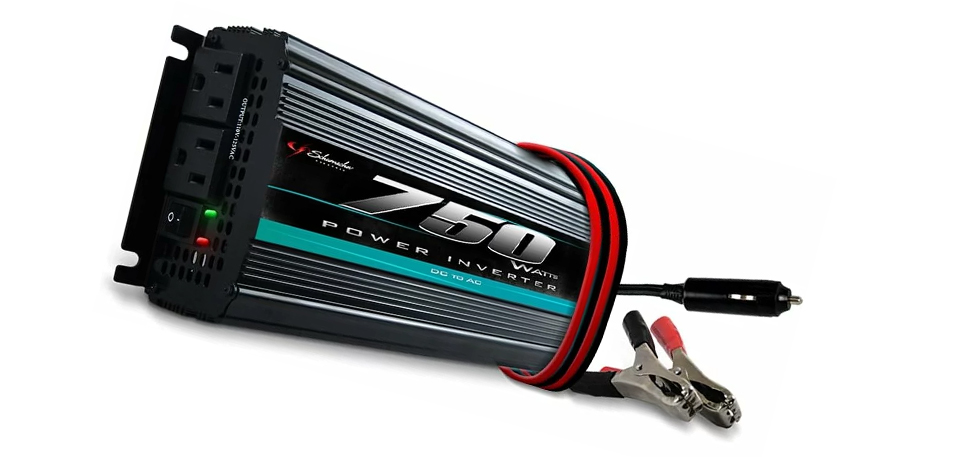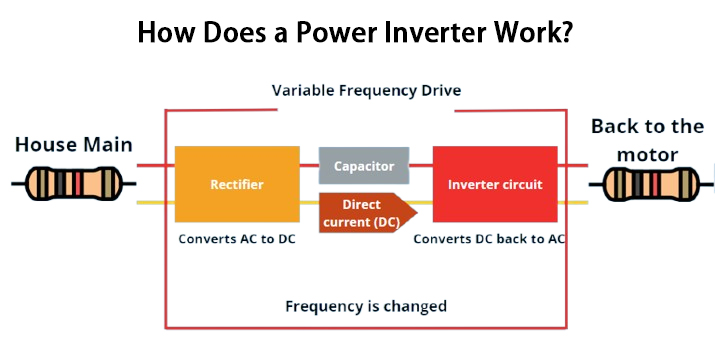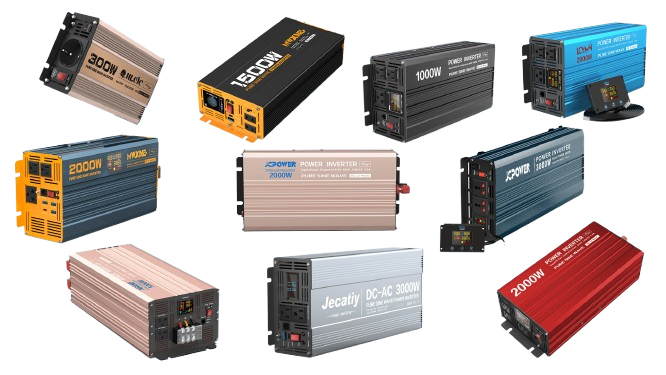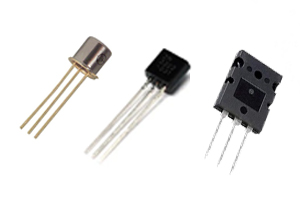How Does a Power Inverter Work? An Easy Explanation for Beginners
Author:admin Date: 2025-06-17 08:48 Views:279
Introducción
Different sources of current can determine which devices can work with that source. That is how you end up with AC devices and DC devices. What happens when you have a direct current source but the device needs an alternating current? That is where the power inverter comes in handy to help with the conversion. Let us learn more about power inverters below.
What is a Power Inverter

A power inverter is an electronic device that converts direct current (DC) to alternating current (AC). The power converter takes DC power from sources such as solar panels and batteries and transforms it into AC power, which is more popular for many household devices.
How Does a Power Inverter Work?
Ya sea que se trate de un power inverter for a car or any other type, they all have similar working principles. First, you have the DC input. This is power that flows in one direction and comes from sources such as solar panels or batteries.

During the conversion process, the power inverter uses electronic components to rapidly switch the direction of electrical flow, creating the alternating current (AC) pattern.
The resulting power of the DeWALT power inverter now will be AC power. This is then used as the AC input needed by many household appliances.
Types of Power Inverters

Antes de que puedas comprar eso RV power inverter, it is good to understand the various types available to choose the right one. Here are some of the top types of power inverters in the market.
Based on Output Waveform
Sine Wave Inverters
These are quite common and recommended power inverters for various devices. They produce smooth and clean AC waveforms, like those you would get with the power grid. This makes the inverters suitable for sensitive electronics and appliances.
Modified Sine Wave Inverters
These are also known as modified square wave or quasi-sine power inverters. Their waveform is less smooth than the sine wave. They are generally more affordable but unsuitable for all devices, especially sensitive electronics or motors.
Square Wave Inverters
If you want the cheapest 1000-watt power inverter, this is what you may choose. It is the cheapest and also simplest, but it produces a square wave output. They are mostly suited for basic appliances and might lead to damage to some electronics.
Basado en la aplicación
Solar Inverters
Tal cual Harbor Freight power inverter will be designed to work with solar panels. This is where it converts the DC power from the panels into AC power. They can further be categorized as off-grid, hybrid, and grid-tie inverters.
Grid-Tie Inverters
Such power inverters are designed to be connected to the power grid, allowing them to send excess solar energy back to the grid and potentially help the owner receive credit for it.
Off-grid Inverters
These are also called standalone inverters. They are used in applications where there is no power grid connected. A Ryobi power inverter meant for RVs or remote locations is expected to be a good example. They simply draw power from batteries and convert it into AC power.
Hybrid Inverters
These power inverters combine the functions of a battery inverter and a solar inverter. This allows for the use of solar power and battery storage to provide backup power for different types of applications.
There can be other ways of categorizing the power inverters, but the above are the most common. You may also come across other types, such as string inverters, microinverters, central inverters, and three-phase inverters. You need to know how each works to see if it suits your application.
Uses of Power Inverters
Whether it is a 1500-watt or 3000-watt power inverter, there are different types of applications that someone can find useful. Here is what to expect regarding the use of power inverters.
Power Backups
A 5000-watt power inverter should come in handy to operate the home power backup system. This is where you can keep the essential appliances running. This includes the fans, lights, fridges, and communication devices.
You can also use them in emergency power supplies, such as hospitals, small offices, and educational facilities. These facilities rely on such devices to ensure continuous operations despite a power blackout.
Off-grid Living
Let us say you want to live in a remote place. Then, a power inverter is quite important. You need it to convert the battery or solar panel direct current into alternating current. Anyone who is going to depend on solar power will need an inverter to make the DC power more useful with the household devices you have.
Vehicle and Marine Applications
Recreational vehicles or RVs could use power inverters to power the different devices onboard. This includes appliances, entertainment systems, and more. The result is that you can still enjoy comfortable travel with AC power at your disposal.
Boats and yachts also need AC power to keep various key components running. This includes the lighting, navigation systems, and other essential equipment.
Construction
A 12-V power inverter can be installed at a construction site to power the tools and machinery needed for construction. This is useful, especially when the grid power is not yet connected.
How to Choose the Right Power Inverter
Antes de elegir una 1500-watt power inverter, consider a few things. This will help you choose the right power inverter for the job.
Determine the Power Requirements
Start by calculating the total wattage of the appliances and devices that will be connected to the power inverter. This can determine the size of the power inverter so that it can support all the devices connected to it.
Power Inverter Type and Size
El power inverter for a home you choose should have a higher wattage rating than the calculated total wattage of the devices.
You also have to consider the type of power inverter. Common examples are pure sine wave and modified sine wave. Consider the pure sine wave for more sensitive electronics as you get cleaner and more stable power output. The modified sine wave inverters are cheaper but not the best for all devices.
You also need a power inverter with a higher efficiency. This means less energy is wasted during the power conversion process.
Installation and Compatibility
The battery compatibility ensures that the inverter is compatible with the type and capacity of the existing battery system. Also, make sure that the installation is done right. If it is a solar power inverter, have someone with experience dealing with such connections do it for you. This ensures the reliability of the power inverter is maintained.
Other Factors
You may also consider the safety features in place. For example, some power inverters come with overload protection, short-circuit protection and over-temperature protection. It is important to consider such protection to keep the devices safe.
Size can also be a factor depending on where you want to install it. Make sure to find a unit that will fit in the allocated space while still deliver on the performance you need.
The overall build quality and brand reputation can also determine which power inverter you get. You need a unit from top brands and one that can withstand various functions. This ensures the best results always.
How to Size Power Inverters
It might come as a surprise, but a 2000-watt power inverter might not be enough for some applications. You need to do the right sizing to buy the right power inverter from Walmart or any other outlet.
Here are the steps you should follow to do proper sizing
- Determine the total power consumption
This is done by listing all the appliances, noting their wattage, and then summing up the wattages. Having this information is key in finding the best DC to AC power inverter that can support all the devices connected to it.
- Account for surge power
Devices such as motors and compressors need a high start up current. This means they can draw a significant amount of power from the power inverter when starting. So, you need to account for this to ensure it works well for such applications as well.
Look at the appliance specifications to find its surge power rating. It can be called peak power or starting wattage for some appliances. Incorporate this surge power in the total wattage you need.
- Apply a safety margin
This is a recommendation for anyone who needs a better house or vehicle power inverter. You might have power surges or future needs, and you do not need to start sourcing for another power inverter. So, add a safety margin of 20 to 25% on the total to get a higher-rated power inverter.
- Inverter Efficiency
You might not get an inverter with 100% efficiency, but that does not mean you go for the lowest. It is advisable to get a power inverter with an efficiency rating of 85 to 95%. This should be good enough for most applications. This information will be included in the power inverter datasheet to help you choose the right one.
How to Install a Power Inverter
We will look at a scenario where you want to install an AIMS power inverter in your house. Here is a quick process you can follow.
- Find a suitable location. It should be dry, well-ventilated, and easily accessible for maintenance and monitoring.
- Mount the inverter. They mostly come with mounting hardware, but getting some from your local stores should not be hard. Ensure the mounting rack is securely installed and stable.
- Connect the DC power. Make sure that you connect the terminals correctly. Do not forget to ground the inverter as well. Route the wires carefully and keep them out of the way.
- Connect the AC output. This can include running wires from the power inverter to the house’s electrical panel or a designated load.
- Test the installation to ensure the inverter is working correctly as expected. Make adjustments where possible to ensure the best performance.
Conclusión
El best power inverter should be able to cater to your needs and power your devices better. There are several options in the market; you only have to choose the right one. Consider the overall capacity of the power inverter to ensure it can handle all your needs. Still, look at the inverter type to know if it will work well with sensitive electronics. These and other factors mentioned above will help find the best power inverter based on the application and power needs.
Envíe RFQ, le responderemos de inmediato.
Preguntas frecuentes
What size of power inverter do you need?
It is usually based on the number of devices you want to connect to the power inverter. Sum up the wattage and add a 20 to 25% safety margin so that you can use the figure to determine the right size of a power inverter.
Is there a difference between peak power and continuous rating?
Continuous power is the maximum power the inverter can supply nonstop, while peak power or surge power is a short burst of higher wattage that the inverter can supply for devices such as motors and compressors that need a higher initial power supply.
Is it safe to use an inverter in an RV or car?
Yes, it is safe to use a power inverter in a car or RV as long as the installation is done right. Also, ensure the inverter is well-ventilated and matches the car’s or RV’s electrical load. Using the proper wiring practices is also recommended to avoid overheating or damage.
Do power inverters require maintenance?
You can do a few things to maintain your power inverter and ensure it works properly. These include keeping the vents clean and dust-free, inspecting the connections to ensure they are tight, and checking for warning indicators.


